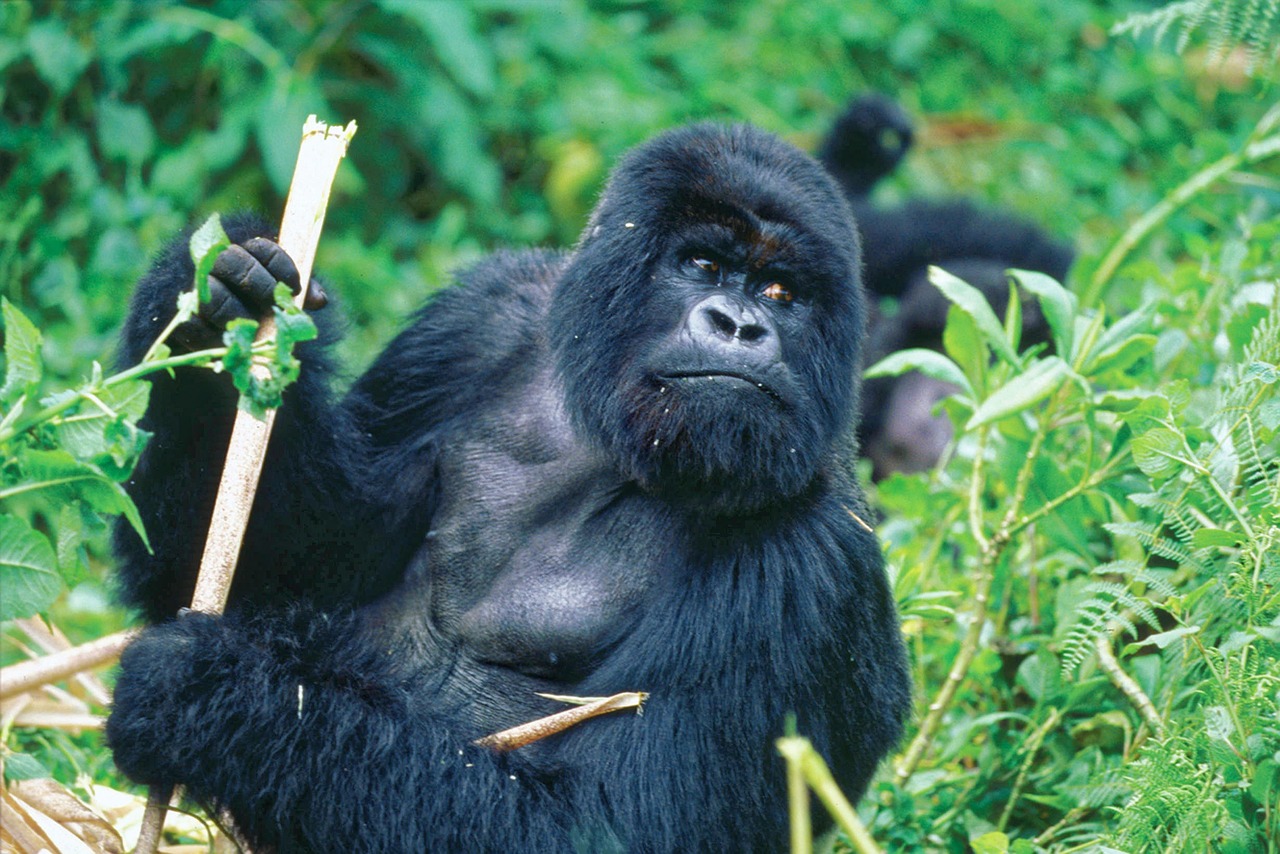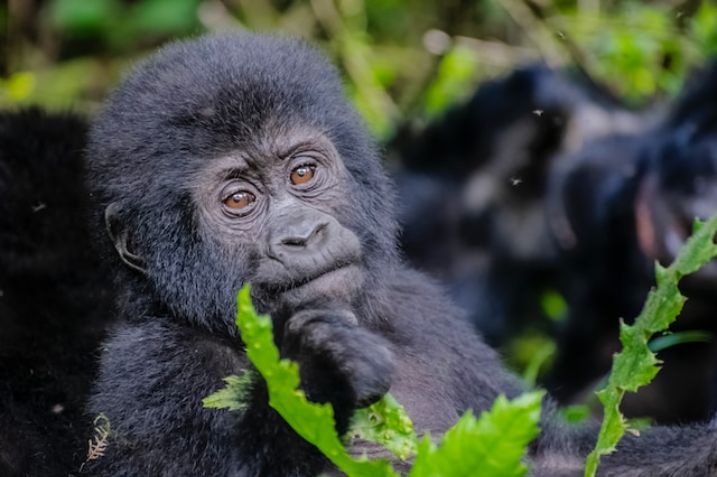
All About Bwindi National Park
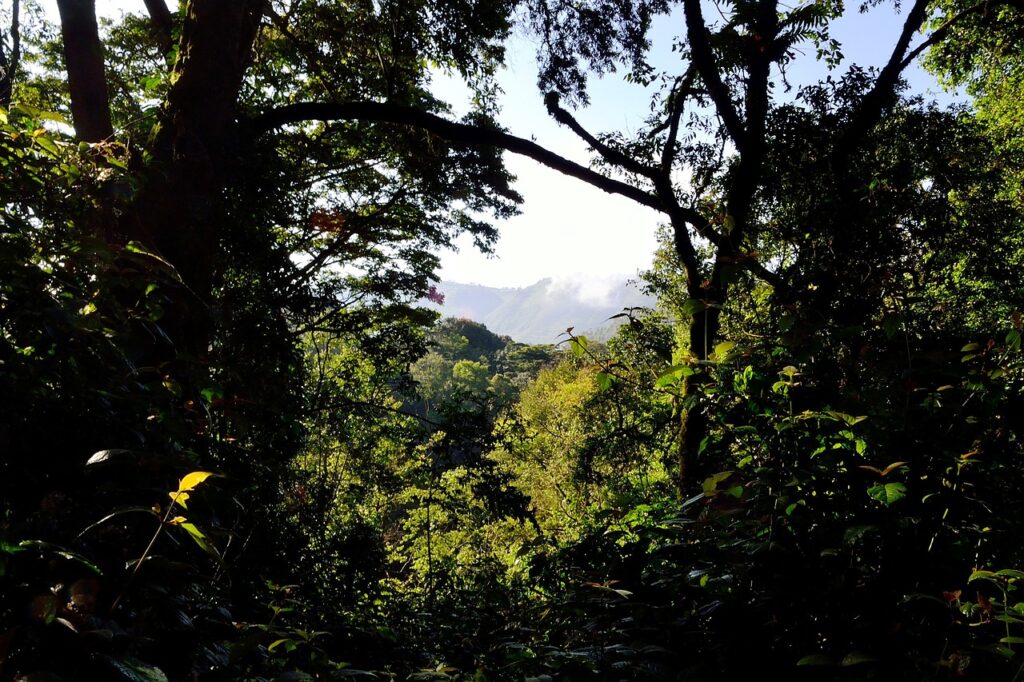
Bwindi Impenetrable National Park is a protected area located in southwestern Uganda, bordering the Democratic Republic of Congo to the west and Rwanda to the south.
This park is managed by the Uganda Wildlife Authority, and efforts are ongoing to protect its fragile ecosystem and promote sustainable tourism in the area. The park was established in 1991 and was declared a UNESCO World Heritage site in 1994 due to its exceptional biodiversity and cultural significance, as it is home to several indigenous communities who have lived in the area for generations.
The park is named after the dense tropical forest that covers much of its 331 square kilometers (128 square miles), which is home to over 400 species of plants, 350 species of birds, and 120 species of mammals, including several endangered species such as the mountain gorilla. The park is home to over 400 mountain gorillas, which is roughly half of the world’s remaining population.
The park is characterized by its thick forest, steep hills, and deep valleys, with an altitude range of 1,160 to 2,607 meters above sea level, which make it difficult to access and have earned it the name “impenetrable”.
Bwindi National Park is one of the few remaining habitats for the endangered mountain gorilla, it has a population of over 400 mountain gorillas, which is almost half of the world’s remaining population. Visitors can go on guided gorilla trekking expeditions to observe these majestic creatures in their natural habitat. The gorillas are grouped into several families or troops that are habituated to human presence, and visitors are only allowed to spend one hour with the gorillas to minimize their disturbance.
Sectors of Bwindi National Park
The park is divided into four sectors, each of which is home to a different gorilla group that has been habituated for tourism purposes. Visitors can obtain permits to track and observe these gentle giants in their natural habitat, with the guidance of trained rangers and guides.
Buhoma Sector
Buhoma is the oldest and most visited sector of the park, and is located in the northern part of the park. The sector is named after the small town of Buhoma, which serves as the main entry point to the park. It is home to the Mubare gorilla group, which was the first group to be habituated for tourism in the park.
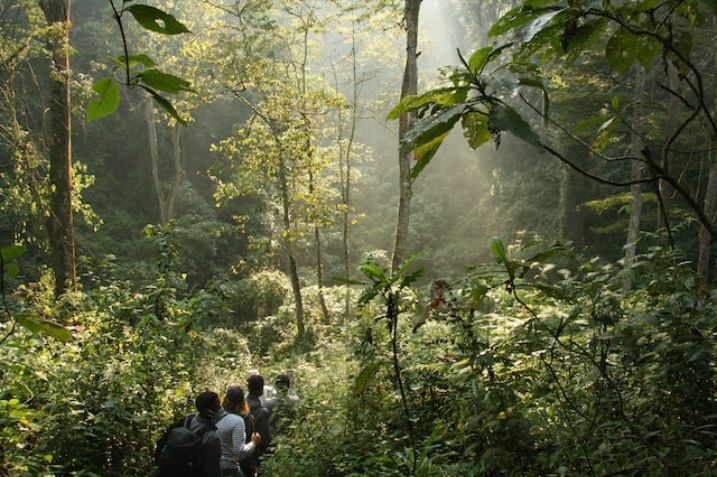
The sector is situated at an altitude of between 1,190 and 2,607 meters, which gives it a varied landscape with both mountainous and lowland terrain. The gorilla families in Buhoma include Habinyanja, Rushegura, and Mubare.
Out of the 4 sectors this sector has the easiest trail to reach the Gorilla, so we highly recommend this sector for travelers who are looking for an easy trek especially the elderly people.
The nearest Airstrip is Kihihi airstrip, which is about 1.5 hours drive (45+Km).
Apart from gorilla trekking, Buhoma sector also offers a number of other activities such as nature walks & bird watching.. The sector is also home to a number of community-based initiatives aimed at promoting conservation and sustainable tourism practices. Visitors can participate in cultural experiences such as village walks and visits to local schools and community projects.
Ruhija Sector
It is located in the eastern part of the park and is one of the most remote and least visited sectors, making it a great option for visitors seeking a more exclusive and off-the-beaten-path experience.
Ruhija Sector is known for its rugged and mountainous terrain, with steep slopes and deep valleys that provide a habitat for a wide variety of wildlife and plant species. Ruhija Sector is home to several habituated gorilla families that are available for trekking. These include the Bitukura, Oruzogo, and Kyaguriro gorilla families, among others.
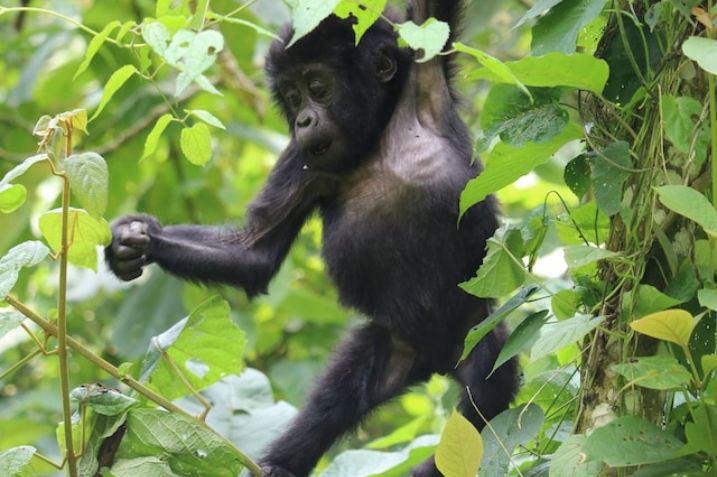
The nearest Airstrip is Kihihi airstrip, which is about 2.5 hours drive (65+Km).
In addition to gorilla tracking, Ruhija Sector offers a range of other activities for visitors, including birdwatching, forest walks, and also experience the culture of the local Batwa community, who have lived in the area for generations. The sector is also known for its panoramic views of the surrounding hills and valleys, which offer a stunning backdrop for hiking and photography.
Rushaga Sector
It is situated in the southern part of the park and is known for its diverse wildlife and beautiful scenery. Rushaga Sector is home to several habituated gorilla families that are available for trekking, including the Nshongi, Mishaya, Busingye, and Kahungye gorilla families.
Rushaga sector is also famous for the Gorilla habituation experience and this is the only sector where this activity is done. In this activity you would be spending around 4 hours along with Gorillas, whereas in the normal Gorilla tracking you would be spending 1 hour with the Gorillas.
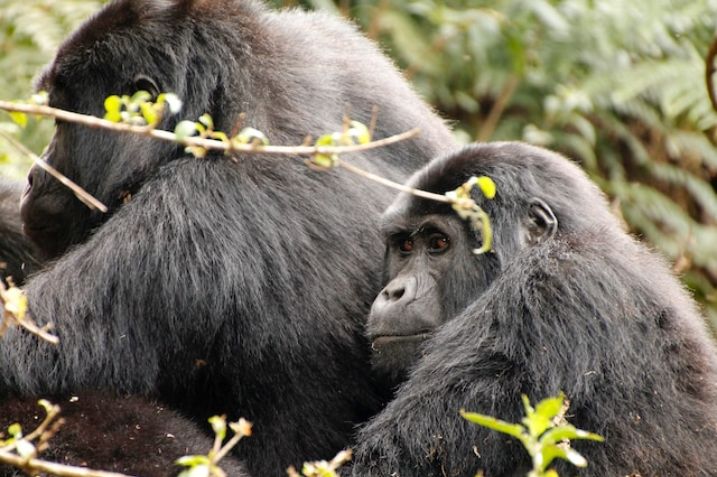
The nearest Airstrip is Kisoro airstrip, which is about 1.5 hours drive (40 Km).
In addition to gorilla trekking, Rushaga Sector also offers other outdoor activities such as bird watching, hiking, and cultural visits to the nearby Batwa community, which include visiting local schools, meeting with traditional healers, farms, and markets, learning about traditional medicine and craft making and participating in cultural dances and performances.
Nkuringo Sector
The sector is located on the southern side of the park and covers an area of about 29 square kilometers and is situated in the southern part of the national park. It is named after the local village of Nkuringo, which is located at the base of the Nteko ridge.
Nkuringo is home to one of the habituated gorilla families, the Nkuringo gorilla family, which is led by a silverback named Rafiki.
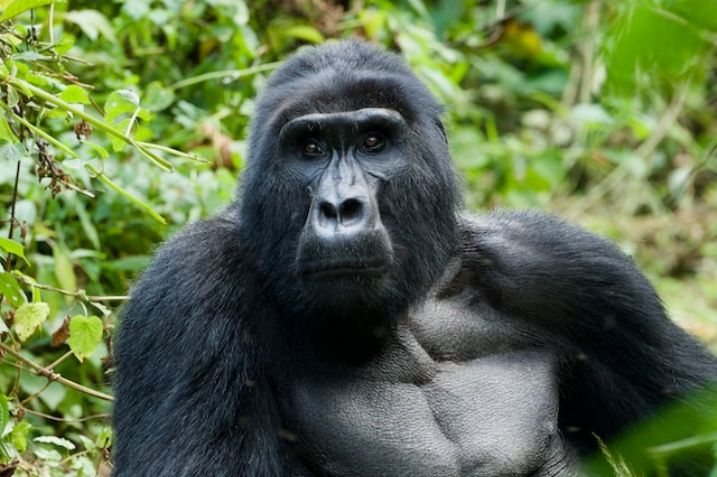
Nkuringo sector is characterized by steep hills and deep valleys covered by a dense tropical rainforest that is part of the larger Virunga massif, making it one of the more challenging gorilla trekking destinations. It is also known for its breathtaking views of the surrounding hills, valleys, and volcanoes, including the active Mount Nyiragongo in the DRC.
The nearest Airstrip is Kisoro airstrip, which is about 1.5 hours drive (40 Km).
In addition to gorilla tracking, visitors to the Nkuringo sector can participate in guided nature walks, bird watching, and cultural experiences with the local Batwa community. The Batwa are a pygmy tribe that once lived in the forest and were hunter-gatherers.
Accommodation options in Bwindi
There are various types of accommodations available in and around Bwindi Impenetrable National Park, catering to different budgets and preferences. Here are the most common types of accommodations:
Lodges: These are permanent structures that offer en-suite rooms or cottages with comfortable beds, bathrooms, and other amenities like restaurants, bars, and lounges. Lodges range from budget to luxury options and are usually situated both inside the park.
Camps: These are typically tented accommodations that provide a more rustic and immersive experience in the wilderness. Camps offer various levels of comfort, from basic to luxury, and are usually located inside the park.
Overall, the type of accommodation visitors choose will depend on your budget, travel style, and preferences. It’s important to book in advance, especially during peak season, as availability can be limited.
What is Gorilla tracking and what happens in Gorilla tracking experience?
Gorilla tracking in Bwindi National Park is a popular activity that involves trekking through the dense forest to observe the endangered mountain gorillas in their natural habitat.
Here’s how the gorilla tracking activity takes place in Bwindi National Park:
- Booking: Visitors interested in gorilla tracking need to book permits in advance through the Uganda Wildlife Authority or a registered tour operator. Permits cost US$ 700, and each permit allows one person to track one gorilla family for one hour.
- Briefing: The activity usually starts early in the morning, and visitors are required to arrive at the park headquarters for a briefing by the Uganda Wildlife Authority (UWA) rangers.
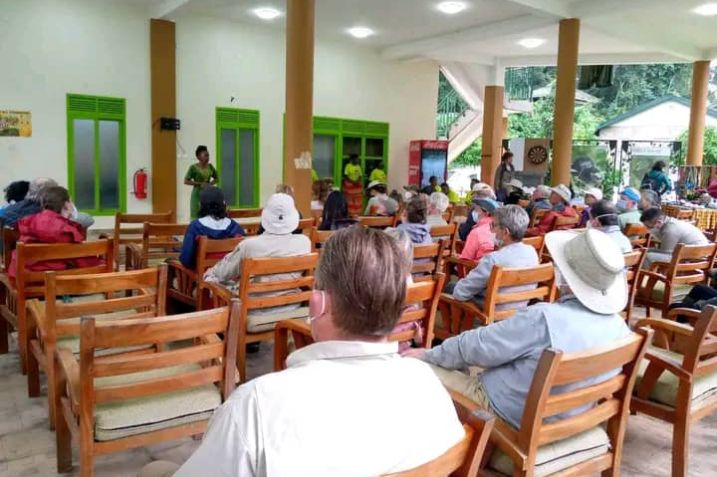
During the briefing, visitors are grouped into small groups of up to 8 people and assigned to a particular gorilla family or troop that has been habituated to human presence. Each group is assigned an experienced ranger guide who leads the trek through the dense forest to locate the gorillas. Visitors are given information about the gorilla families, the rules and regulations for tracking, and safety precautions. - Tracking: The trek can take anywhere from 30 minutes to several hours, depending on the location of the gorilla family and the terrain of the park. The trek can be strenuous and requires a moderate level of fitness, as visitors may have to climb steep hills, navigate through dense vegetation, and cross streams.
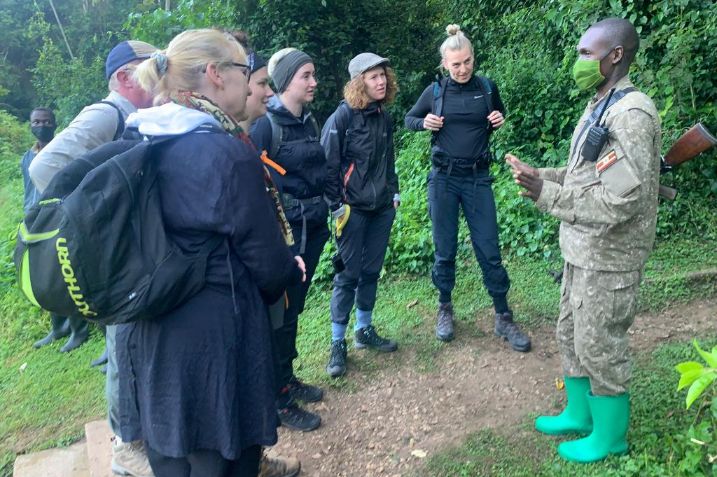
- Gorilla observation: Once the gorilla family is located, visitors are allowed to spend one hour observing and photographing the gorillas. The rangers ensure that visitors keep a safe distance from the gorillas to minimize the risk of disease transmission.
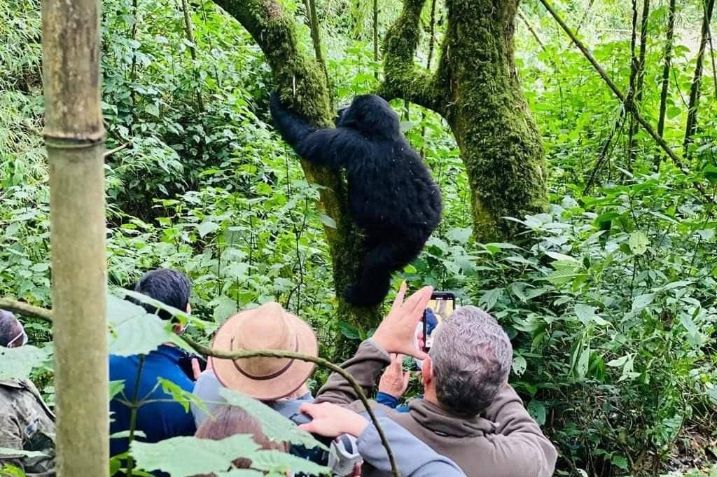
- Return: After the one hour observation, visitors trek back to the park headquarters where they are awarded certificates of participation and can purchase souvenirs to support conservation efforts in the park.
Gorilla tracking is a strenuous activity that requires a reasonable level of fitness. Visitors are advised to wear appropriate clothing and footwear, carry plenty of water and snacks, and follow the instructions of the ranger guides at all times.
It is important to note that gorilla tracking permits are limited to a certain number per day, and visitors are advised to book in advance to secure their spot. Gorilla tracking is a highly regulated activity aimed at conserving the endangered mountain gorilla population, and visitors are required to follow the guidelines set by UWA to ensure the long-term sustainability of the activity.
What is Gorilla Habituation and what happens in Gorilla Habituation?
Gorilla habituation is a process where a group of wild gorillas is gradually accustomed to the presence of humans, in preparation for gorilla trekking. This is done in order to make the gorillas more comfortable around people and to eventually allow them to be visited by tourists on a regular basis. Rushaga Sector in Bwindi Impenetrable National Park is one of the few places in Africa where visitors can participate in gorilla habituation.
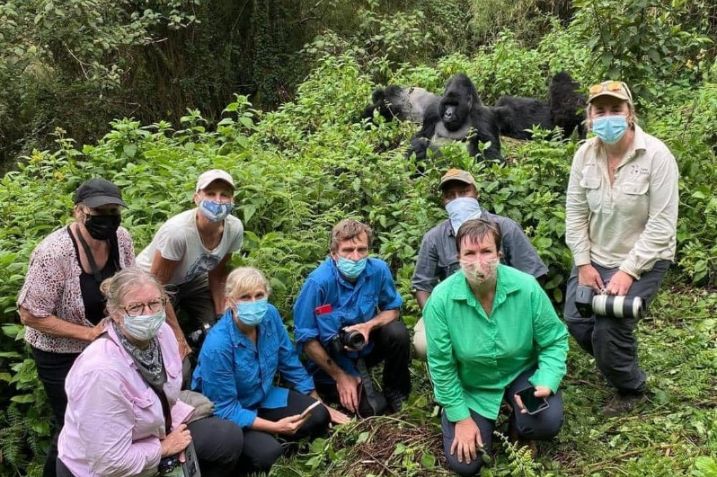
In Rushaga Sector, the gorilla habituation process is conducted by a team of expert researchers and rangers who have been trained to interact with the gorillas in a way that minimizes stress and disturbance to the animals.
Over time, the gorillas become used to the presence of humans, and the habituation process continues until the gorillas are fully habituated. This process can take up to two years or more, depending on the group of gorillas.
Gorilla habituation is a unique and unforgettable experience, allowing visitors to witness the process of habituating wild gorillas to human presence, while also contributing to their conservation. However, it is important to note that gorilla habituation is a sensitive process, and the number of visitors who can participate is limited to ensure the safety and well-being of the gorillas. Visitors are advised to book their gorilla habituation experience in advance and to follow all guidelines and regulations set by the park authorities.
Best time to visit?
The best time to visit Bwindi Impenetrable National Park in Uganda depends on your interests and what you would like to experience during your visit. The park can be visited year-round, but there are certain times of the year that may be more suitable for particular activities.
The peak tourist season in Bwindi is from June to September and from December to February. During these months, the weather is generally dry, making it easier to navigate the park’s rugged terrain and spot wildlife. The dry season is also the best time for gorilla trekking, as the trails are less muddy and easier to navigate.
If you’re interested in bird watching, the best time to visit is from November to April, which is the park’s wet season. During this time, the forest is lush and green, and many bird species are breeding and nesting. However, be prepared for rain and muddy trails if you choose to visit during this time.
Overall, the best time to visit Bwindi Impenetrable National Park depends on your interests and preferences. If you’re interested in gorilla trekking, then the dry season is the best time to go. However, if you’re interested in bird watching or seeing the forest in full bloom, then the wet season may be a better choice for you.
How is weather in Bwindi?
Bwindi Impenetrable National Park is located in southwestern Uganda and has a tropical rainforest climate. The weather in the park is generally warm and humid year-round, with temperatures ranging from 10°C to 25°C (50°F to 77°F) depending on the time of day and altitude.
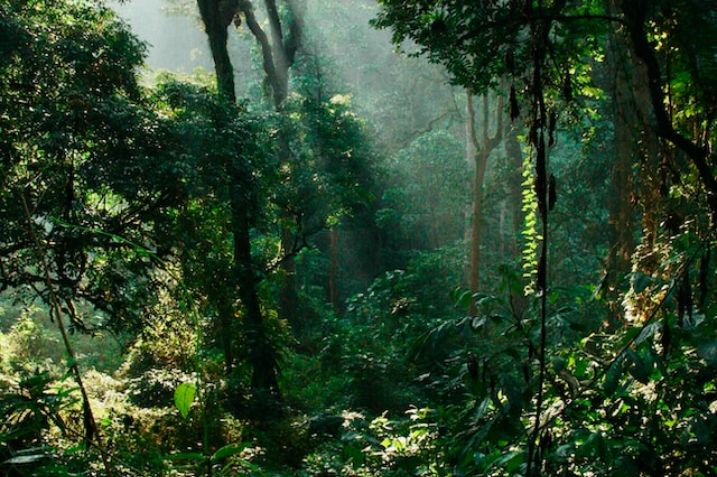
The park has two rainy seasons: the long rainy season from mid-March to May and the short rainy season from September to November. During these periods, rainfall can be heavy, and it can be challenging to navigate the park’s rugged terrain. However, the forest is lush and green, making it an ideal time for bird watching and seeing the forest in full bloom.
The dry season in Bwindi Impenetrable National Park runs from June to August and December to February. During this time, the weather is generally dry and sunny, with little to no rainfall. The dry season is the best time for gorilla trekking as the trails are less muddy and easier to navigate.
Overall, the weather in Bwindi Impenetrable National Park is typically warm and humid year-round, with rainfall occurring throughout the year. It is important to pack appropriate clothing and gear for the season when you plan to visit.

